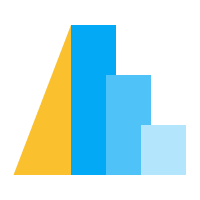Interval Selection on a Map#
This is an example of a binned bar chart on the right where the filtered overlay is adjusted by interacting with the map on the left.
import altair as alt
from altair.datasets import data
# load data
gdf_quakies = data.earthquakes()
gdf_world = data.world_110m(layer="countries")
# definition for interactive brush
brush = alt.selection_interval(
encodings=["longitude"],
empty=False,
value={"longitude": [-50, -110]}
)
# world disk
sphere = alt.Chart(alt.sphere()).mark_geoshape(
fill="transparent", stroke="lightgray", strokeWidth=1
)
# countries as shapes
world = alt.Chart(gdf_world).mark_geoshape(
fill="lightgray", stroke="white", strokeWidth=0.1
)
# earthquakes as dots on map
quakes = alt.Chart(gdf_quakies).transform_calculate(
lon="datum.geometry.coordinates[0]",
lat="datum.geometry.coordinates[1]",
).mark_circle(opacity=0.35, tooltip=True).encode(
longitude="lon:Q",
latitude="lat:Q",
color=alt.when(brush).then(alt.value("goldenrod")).otherwise(alt.value("steelblue")),
size=alt.Size("mag:Q").scale(type="pow", range=[1, 1000], domain=[0, 7], exponent=4),
).add_params(brush)
# combine layers for the map
left_map = alt.layer(sphere, world, quakes).project(type="mercator")
# histogram of binned earthquakes
bars = alt.Chart(gdf_quakies).mark_bar().encode(
x=alt.X("mag:Q").bin(extent=[0,7]),
y="count(mag):Q",
color=alt.value("steelblue")
)
# filtered earthquakes
bars_overlay = bars.encode(color=alt.value("goldenrod")).transform_filter(brush)
# combine layers for histogram
right_bars = alt.layer(bars, bars_overlay)
# vertical concatenate map and bars
left_map | right_bars
import altair as alt
from altair.datasets import data
# load data
gdf_quakies = data.earthquakes()
gdf_world = data.world_110m(layer="countries")
# definition for interactive brush
brush = alt.selection_interval(
encodings=["longitude"],
empty=False,
value={"longitude": [-50, -110]}
)
# world disk
sphere = alt.Chart(alt.sphere()).mark_geoshape(
fill="transparent", stroke="lightgray", strokeWidth=1
)
# countries as shapes
world = alt.Chart(gdf_world).mark_geoshape(
fill="lightgray", stroke="white", strokeWidth=0.1
)
# earthquakes as dots on map
quakes = alt.Chart(gdf_quakies).transform_calculate(
lon="datum.geometry.coordinates[0]",
lat="datum.geometry.coordinates[1]",
).mark_circle(opacity=0.35, tooltip=True).encode(
longitude="lon:Q",
latitude="lat:Q",
color=alt.when(brush).then(alt.value("goldenrod")).otherwise(alt.value("steelblue")),
size=alt.Size("mag:Q", scale=alt.Scale(type="pow", range=[1, 1000], domain=[0, 7], exponent=4)),
).add_params(brush)
# combine layers for the map
left_map = alt.layer(sphere, world, quakes).project(type="mercator")
# histogram of binned earthquakes
bars = alt.Chart(gdf_quakies).mark_bar().encode(
x=alt.X("mag:Q").bin(extent=[0,7]),
y="count(mag):Q",
color=alt.value("steelblue")
)
# filtered earthquakes
bars_overlay = bars.encode(color=alt.value("goldenrod")).transform_filter(brush)
# combine layers for histogram
right_bars = alt.layer(bars, bars_overlay)
# vertical concatenate map and bars
left_map | right_bars
